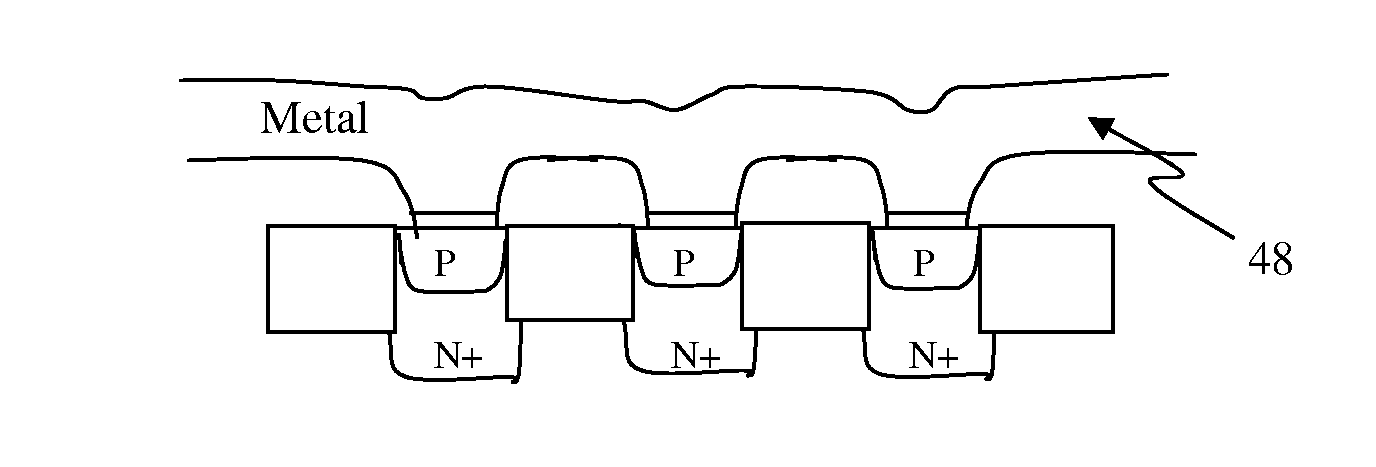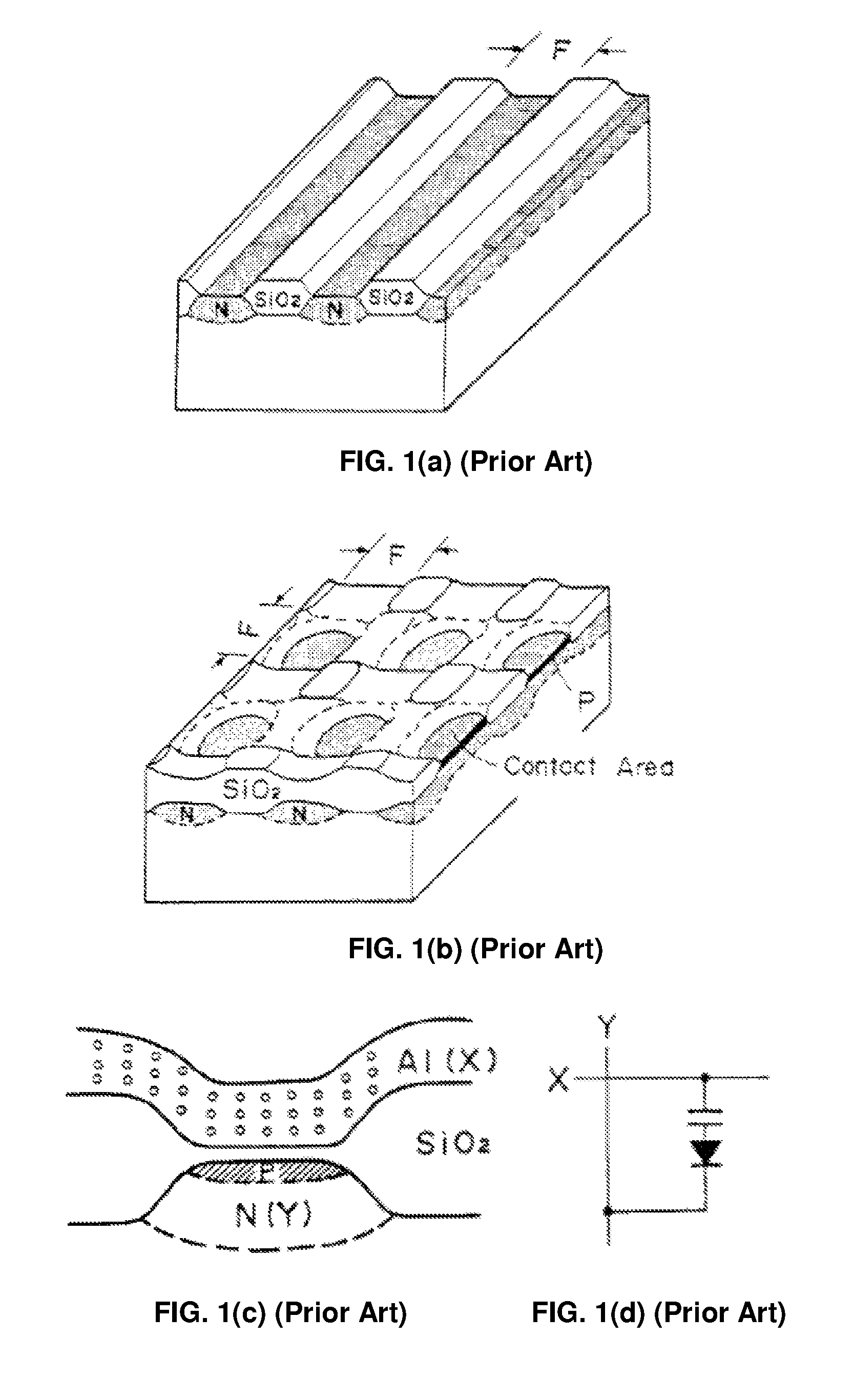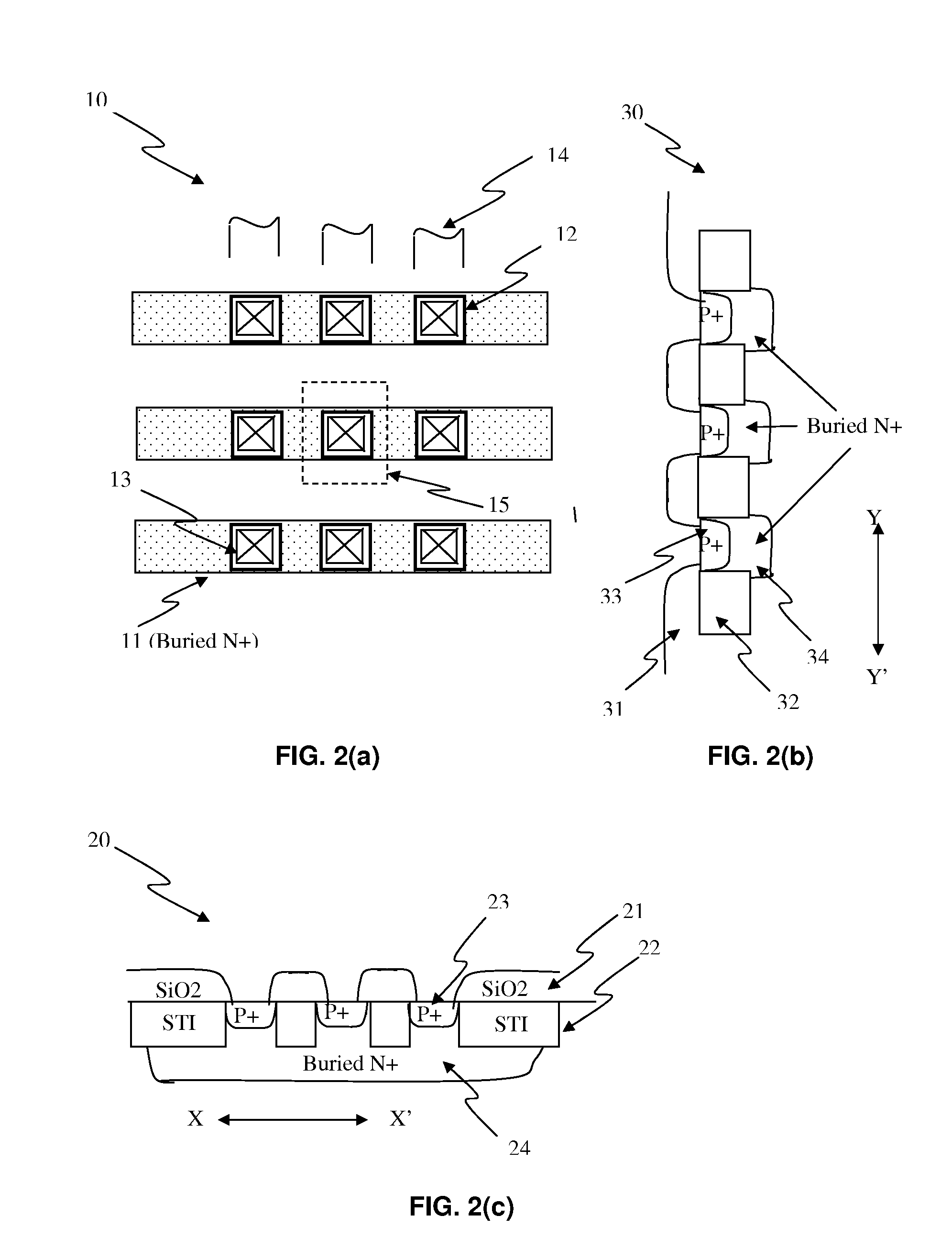Circuit and system of a high density anti-fuse
a high-density anti-fuse, circuit and system technology, applied in the direction of semiconductor devices, semiconductor/solid-state device details, instruments, etc., can solve the problems of high manufacturing cost, high breakdown voltage, and more mask layers and process steps, so as to achieve the effect of high fabrication cos
- Summary
- Abstract
- Description
- Claims
- Application Information
AI Technical Summary
Benefits of technology
Problems solved by technology
Method used
Image
Examples
Embodiment Construction
[0056]This invention concerns a dielectric breakdown anti-fuse cell using diode as program selector defined at a cross-point of two conductor lines in perpendicular directions. Various embodiments about dielectric materials, diode structures, conductor types, process steps, devices employed, and cell select schemes will be disclosed and that are within the scope of this invention.
[0057]FIG. 2(a) shows a top view of a dielectric breakdown anti-fuse 10 according to one embodiment. Each anti-fuse cell 15 is defined by active regions in X- and Y-directions. An array of buried N+ lines 11 serve as wordlines are built running in the X-direction before active regions 12 is defined. The active regions can be isolated in X- and Y-directions by Local Oxidation (LOCOS) or Shallow Trench Isolation (STI). A contact hole 13 in each active region is etched after depositing an interlayer dielectric. Then, N type and P type dopants are subsequently implanted into the contact hole in each active regi...
PUM
 Login to View More
Login to View More Abstract
Description
Claims
Application Information
 Login to View More
Login to View More - R&D
- Intellectual Property
- Life Sciences
- Materials
- Tech Scout
- Unparalleled Data Quality
- Higher Quality Content
- 60% Fewer Hallucinations
Browse by: Latest US Patents, China's latest patents, Technical Efficacy Thesaurus, Application Domain, Technology Topic, Popular Technical Reports.
© 2025 PatSnap. All rights reserved.Legal|Privacy policy|Modern Slavery Act Transparency Statement|Sitemap|About US| Contact US: help@patsnap.com



